Top 10: Winter Riding Tips
The darker, colder months bring with them increased chances of traffic delays, road accidents and breakdowns - but being prepared makes a world of difference. Here are our top 10 tips to stay safe and secure on your motorcycle or scooter this winter.
Top 10: Winter Essentials for Drivers | Top 10: Motorcycle Jackets Under £100
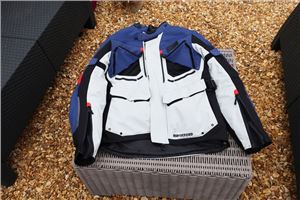
Sort your kit
Beating the winter chill starts the moment you get dressed in thermal top and leggings. This is all about layering, which captures warm air between different clothes and keeps you much warmer than just a single, thick piece of clothing. Layers also let you tailor how warm or bulky your clothing is by adding or removing as needed throughout the day.
A pair of thermal socks over normal footwear helps, but make sure they fit easily inside winter boots. Don’t forget about gloves and consider a pair of inner gloves to add yet another layer. A neck warmer is another vital item of clothing as it’s important to cover every bit of exposed skin and plug those gaps to keep the breeze out. Whichever visor you use, make sure it’s spotlessly clean and has an anti-fog coating so your breath doesn’t mist it up. Keep some wipes handy to clean the outside of the visor.
>> Check out all our motorcycle kit (helmets, jackets, armoured jeans etc) reviews
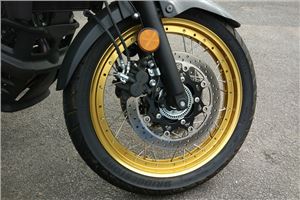
Prep your bike
Motorcycles are magnets for winter filth, so treat your bike to regular washes. A garden hose is good for removing road salt and grime, but be wary of jet washes as they blast away vital grease from bearings. Use a good quality bike wash to shampoo off tougher muck and make sure you clean the brakes thoroughly after every wash.
Regular servicing is common sense at any time of the year but think about shortening the time between garage visits in winter to keep the brakes, chain and running gear in tip-top shape. Tyre pressures should be checked weekly and inspect the tyres for any damage and wear. Swapping to winter-biased tyres can improve grip and shorten braking distances. Other areas to prep for winter are the bar grips and a power point. Lastly, think about fitting crash bars or bungs just in case you do have a small spill as they can save thousands in damaged bike bits.

Be visible
A lot of riders will groan at the mention of a high-vis Sam Brown belt, but it’s a cheap and easy way to make yourself more easily spotted in low light conditions. Most good bike jackets and trousers include high-vis material, but adding a dayglo vest or overcoat can only increase your chances of being seen by other road users.
Adding extra lights to your bike can be tricky depending on the model and type, but brighter bulbs are a cinch to fit. A higher intensity bulb not only makes your bike stand out more to others, it gives a better view of the road ahead. Just as importantly, keep lights front and rear clean to maximise their efficiency.
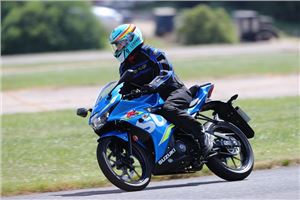
Smoothly does it
Riding a motorcycle in any conditions is all about smooth inputs. On cold roads, it’s vital when traction can be lost more easily when applying the throttle or brakes or steering through a corner. Gentle, considered movements on all of the controls keep the bike balanced and allow the tyres time to find grip. Ride smoothly and you’ll be amazed at how quickly you can make progress even in poor conditions.
To help learn smooth riding skills, consider additional training or trying an off-road school. If your bike has a winter riding mode, use it. You also need to use all of your senses to stay smooth, so listen for where other traffic is and keep a nostril open for the stench of split diesel.
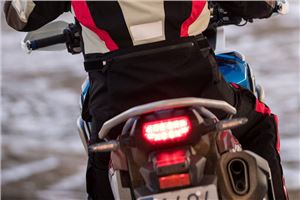
Plan your braking
Stopping distances can increase by up to 10 times in the winter, going up from around 23-metres in perfect summer conditions. Much of this is due to the slimier surface conditions offering less grip, but there’s also the human factor that cold brains and fingers take longer to react. So, give yourself more space to the vehicle in front to allow more time to apply the brakes. With more space, you also have a greater number of options to either stop or find a safe route around the traffic or hazard ahead.
Use the back brake to help spread the stopping load and keep the bike more settled. At low speeds, the back brake offers more finesse for U-turns and in car parks. If you’ve not had to call on your bike’s ABS braking system, find a quiet stretch of road and brake hard enough to trigger the anti-lock system. This way, you know what it feels like and can use it to steering round obstacles while still applying the brakes.
More Top Tens
 Top Ten
Top Ten
Top 10: Helmet cams for horse riders
Riding on the road can be a stressful experience, but a good helmet camera can help to keep you safe...
 Top Ten
Top Ten
Top 10: Father's Day Gifts for petrolheads
Stuck on what to buy your dad this Father's Day? If he's a car lover then we've got ten ideas to help...
 Top Ten
Top Ten
Top 10: Father's Day gifts for petrolheads 2016
We’ve trawled the web to find 10 petrolhead-friendly gifts, with toys, gadgets, car care gear and driving...
 Dash cams
Dash cams
Best dash cameras 2025
There are tonnes of dash cams on the market, ranging from those that'll cost a tenner to those that'll...
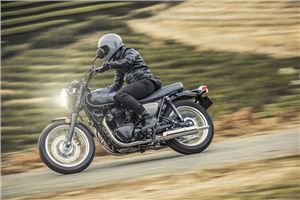
Read the road
Every motorcyclist knows that reading the road is an essential skill. Yet many of us become blasé on routes we use every day. This is when it’s imperative to go back to basics and assess every section of the road for grip levels, hazards, braking and turning points, and the safest course ahead. Good observation takes practice, so do it on every ride before winter sets in and you’ll be ahead of the game.
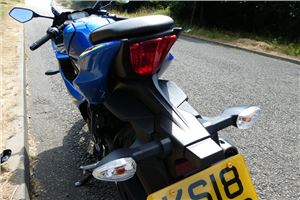
Early signals
Indicators are just that, a method to indicate your intentions to other road users whether they are drivers, cyclists or pedestrians. Flicking on the indicator a little earlier than usual can give others a bit more time to see and react to you, especially that driver who hasn’t bothered to demist their windscreen properly. That’s right, we have to think for them, but it’s better than being knocked off our bikes.

Weather check
The British obsession with the weather works to the advantage of motorcyclists. When you know what’s in store for the ride to work or home, you can have your kit ready and warm on the radiator. Checking the forecast also means you can pack extra gear if it’s going to be colder or wetter later in your journey.
Heated grips will keep your hands warm and they are the most exposed part of the body on any bike. Fitting a 12-volt power point means you can plug in a heated jacket and trousers to fend off the cold as well.
Buy it now
 |
£61.99 |
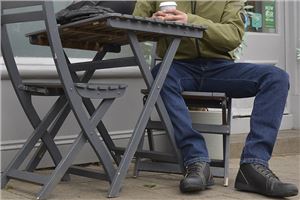
Regular breaks
On longer rides, don’t wait till the cold sets in and your teeth are chattering. Regular stops allow you to warm up, stretch and stay alert. It’s not just the ambient temperature that matters on a motorcycle but the wind chill factor caused by moving through the air at speed. Riding at 30mph in 0-degrees has a wind chill that makes it feel like -6-degrees on the bike.
This sort of cold can affect your decision-making processes and event begin to cause hypothermia. Regular stops will keep your body’s core temperature at the correct level and make sure you are alert.
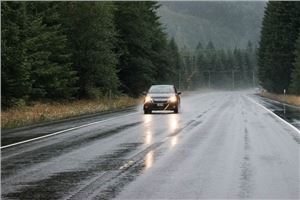
Leave the bike at home
As much as we love our motorcycles, sometimes it’s just better to leave them tucked up in the garage or under a cover. Everyone will have a different threshold where they will decide not to use their motorcycle, but make sure you err on the side of caution as conditions can change suddenly. Apparently dry roads can hide frost or black ice under trees where the sun has not reached or the weather can turn for the worse quickly. Don’t risk it and stay safe to enjoy riding another day.
